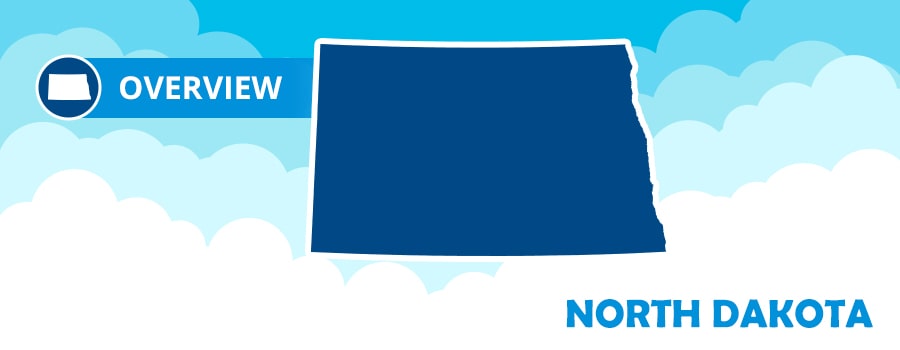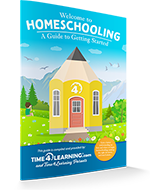Homeschooling in North Dakota
Taking your child’s education into your own hands is no easy task. If you are considering homeschooling in North Dakota but are unsure about how to get started, this page will help guide you through the process. You’ll find information on the homeschooling laws and regulations, associations and support groups, field trips in your area, and many more resources
- How to Start Homeschool in North Dakota
- North Dakota Homeschooling Laws
- North Dakota Homeschool Associations
- North Dakota Homeschool Groups and Co-ops
- North Dakota Homeschool Field Trips
- North Dakota Standardized Testing and Test Prep
- Why Time4Learning is the Leading Homeschool Curriculum in North Dakota
- How to Build the Best Homeschool Curriculum for PreK-12 in North Dakota
This information should by no means be interpreted as legal advice. It is your responsibility to interpret and understand the laws that you will be homeschooling under.
How to Start Homeschooling in North Dakota
The steps to homeschooling in North Dakota are:
- Meet the teacher qualifications
- File a notice of intent to homeschool 14 days before you start every year
- Teach for the required amount of time
- Teach the required subjects
- Choose your preferred homeschool curriculum
- Maintain records
- Participate in standardized tests in grades 4, 6, 8 and 10
- Enjoy homeschooling together!
Welcome to Homeschooling Guide
Download this FREE resource where experienced homeschoolers share their stories for how to begin homeschooling, understanding your child academically, planning your days, and much more.
North Dakota Homeschooling Laws
North Dakota families have a couple options on how to homeschool their child.
- Homeschool under the home education law
- Homeschool as a private school
For those who are homeschooling a child with special needs, there are slightly different requirements for them. Learn more about these on our North Dakota Homeschool Laws page.
North Dakota Homeschool Associations
When first starting to homeschool, it is important to know you have organizations readily available to assist you in any matter. Whether you need legal advice, general support, or in the market for discounted curriculum options, homeschool associations can be the resource you are looking for. Learn more about North Dakota’s statewide organization on our North Dakota’s Association page.
North Dakota Homeschool Groups and Co-ops
Experienced and new homeschoolers alike greatly benefit from homeschool groups and co-ops. These small organizations work to fill in the gaps in areas you may feel lack in your homeschool.
Parents often volunteer to provide group classes in tough subjects such as math, foreign language instruction, or help organize group field trips. Learn more about the different groups on our North Dakota’s Homeschool Groups and Co-ops page.
North Dakota Homeschool Field Trips
Homeschooling has many benefits, but the one benefit that most homeschoolers seem to enjoy the most is being able to take field trips anytime, anywhere. North Dakota is rich with historical, natural, and cultural places to visit. If you’ve decided to pursue homeschooling because of the flexibility and opportunity to enrich learning beyond traditional methods, take it a step further and check out our field trips ideas in North Dakota! Please make sure to contact each site before you plan your visit, as COVID-19 may have impacted their hours of operations.
North Dakota Standardized Testing and Test Prep
Homeschoolers in North Dakota are required to participate in standardized tests in grades 4, 6, 8 and 10. Some families do opt to participate in tests on a yearly basis to build strong portfolios.
That said, there are a couple of exceptions to this rule for those who don’t wish to participate. You may opt out for philosophical, moral, or religious reasons. You can also opt out if you, as the parent, supervising the home education program, have a baccalaureate degree, obtain a minimum score on a national teacher exam, or are a ND certified teacher.
Parents of traditionally school children use Time4Learning as an afterschool program to help prepare their students for upcoming standardized tests as well. Learn more on our North Dakota state test prep page.
Why Time4Learning is the Leading Homeschool Curriculum in North Dakota
Families who choose to homeschool in North Dakota may use the curriculum of their choice. This freedom allows you to pick the ideal solution that meets your child’s learning style, your family’s schedule, and goals.
Because parents are required to maintain records, teach certain subjects and participate in standardized tests, it is important for homeschooling families in North Dakota to be adequately prepared.
Time4Learning helps North Dakotan families meet these requirements by providing all the tools necessary to comply. Below are just a few reasons why our online curriculum is a leading educational choice in North Dakota:
- All core subjects of math, language arts, social studies, and science are included at a highly competitive price.
- Additional electives are available for purchase for a small fee.
- Lesson plans are already prepared so you, as parents, can focus on other aspects of homeschooling. However, you have full control to adjust or start your own lesson plans completely from scratch.
- Recordkeeping is a smooth task with our robust automated grading and reporting tool.
- Our self-paced lessons allow students to progress at their own pace and retake lessons, quizzes, and tests as needed.
- Access to multiple grade levels for different subjects. If your child has mastered science, no need to wait for them to master math as well, to move to next grade of science or visa-versa.
- Lessons are available 24/7 from anywhere. Just take your laptop, connect to the internet, and you’re good to go!
- Our award-winning curriculum promotes critical-thinking and problem solving skills while building confidence in an independent learning environment.
How to Build the Best Homeschool Curriculum for PreK-12
Homeschool curriculum choices have expanded over the last decade. Parents have much more to choose from than typical textbooks, workbooks, and other traditional schooling methods. Online courses, interactive videos, personal computers, laptops, and tablet devices provide exciting and engaging materials for children to experience. But all of these new methods often confuse parents, especially those who are new homeschoolers.
Eventually, parents come to realize that mixing different tools and activities usually keeps their children stimulated and eager to learn. For more information review How to Build the Best Homeschool Curriculum for PreK-12.
North Dakota Unit Study Supplement
Help your homeschooler learn interesting history and geography facts about North Dakota in the Time4Learning unit study supplement.
Online Curriculum for Homeschool, Afterschool and Summer Use
In addition to being an award-winning choice for homeschool families, Time4Learning also offers an online after school program to help build your child’s skills. View our lesson demos and discover why thousands of families in North Dakota are already using it!
Give your student the chance to get back on track or explore exciting electives and get ahead for the next school year with Time4Learning’s online summer school. Our educational materials will engage and challenge your child to succeed.








